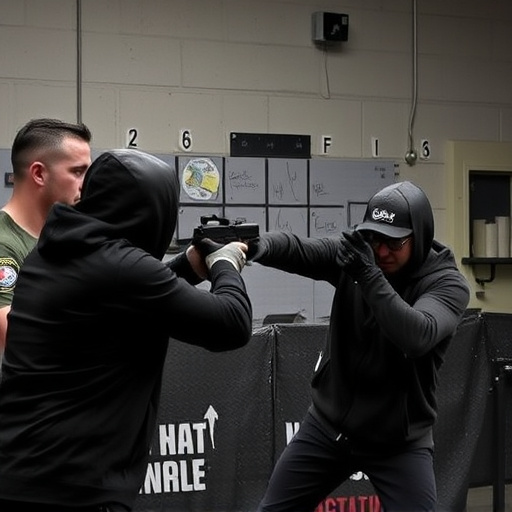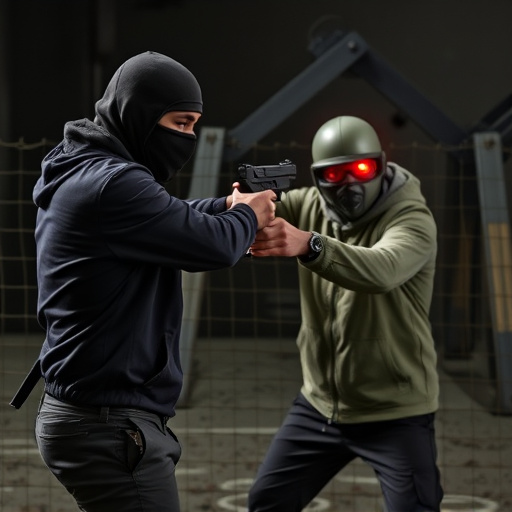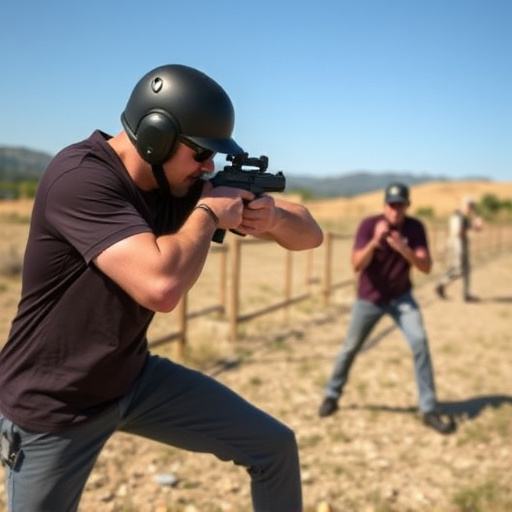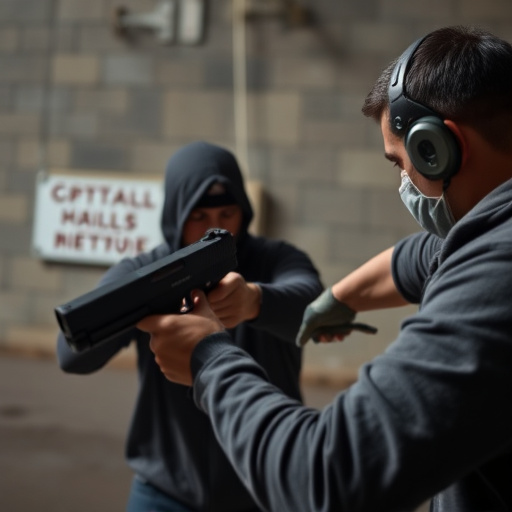High voltage stun guns, marketed by brands like Taser and Sabre Red, temporarily paralyze muscles with electric shocks, rendering targets immobile for seconds to minutes. Their effectiveness depends on technical specifications like voltage, design, and battery life. Understanding these factors is crucial when selecting High Voltage Stun Gun Brands for self-defense or law enforcement. Responsible ownership and adherence to local laws are essential given their power and temporary incapacitation effect.
“In today’s world, understanding the capabilities of self-defense tools like high voltage stun guns is paramount. This article explores muscle incapacitation duration from stun guns, delving into their impact on targets and the factors that influence paralysis time. From ‘Understanding Muscle Incapacitation’ to examining top brands like [Popular High Voltage Stun Gun Brands], we navigate the complexities of these devices. Additionally, ethical considerations and legal aspects are discussed, providing a comprehensive guide for consumers seeking information on high voltage stun gun brands.”
- Understanding Muscle Incapacitation: What Does it Mean?
- The Role of High Voltage Stun Guns in Disabling Targets
- Factors Affecting Duration of Muscle Paralysis from Stun Guns
- Popular High Voltage Stun Gun Brands and Their Effects
- Ethical Considerations: Use, Legal Standing, and Safety Precautions
Understanding Muscle Incapacitation: What Does it Mean?

Muscle incapacitation refers to the temporary loss of muscle function, leading to a reduction in mobility and strength. When a stun gun delivers a high-voltage electric shock, it disrupts the electrical signals traveling through the body, specifically targeting the neuromuscular system. This disruption causes the muscles to contract uncontrollably, resulting in a period of incapacitation that can last from several seconds to a few minutes.
Understanding muscle incapacitation is crucial when considering the effectiveness of high-voltage stun gun brands. These devices are designed to deliver enough electrical current to override the body’s natural signals, creating a safe yet powerful deterrent against potential threats. By understanding the duration and scope of muscle incapacitation, users can better assess their personal safety needs and choose suitable high-voltage stun gun brands for their specific circumstances.
The Role of High Voltage Stun Guns in Disabling Targets

High voltage stun guns play a pivotal role in incapacitating targets, offering a non-lethal solution for self-defense and law enforcement applications. These devices deliver powerful electrical discharges that disrupt the target’s muscular control, leading to temporary paralysis and immobility. The effectiveness of a stun gun lies in its ability to administer a precise yet potent jolt of electricity, with some models capable of delivering up to 50,000 volts. Well-known high voltage stun gun brands like Taser, peppering them with SEO keywords like “high voltage stun gun brands” in their marketing, have become synonymous with this technology. These devices are designed to override the body’s natural electrical signals, specifically targeting muscles and nervous systems, thus neutralizing the subject without causing permanent harm.
The duration of muscle incapacitation varies depending on factors such as the model of the stun gun, the charge delivered, and the target’s physical condition. Typically, a single well-placed shock from a high voltage stun gun can render a person temporarily defenseless for several seconds to a minute. This brief period of incapacity is often sufficient for officers to secure the scene, provide medical aid if necessary, or subdue resistant individuals without resorting to lethal force.
Factors Affecting Duration of Muscle Paralysis from Stun Guns

The duration of muscle incapacitation caused by stun guns can vary significantly based on several factors, including the device’s power output and the specific design or High Voltage Stun Gun Brands. Stun guns deliver an electric shock that temporarily paralyses muscles, rendering the target immobile. The intensity of this shock is measured in volts, with higher voltage typically resulting in longer durations of paralysis.
Additionally, factors like the size and weight of the device, battery life, and the type of current used (AC or DC) can influence the effectiveness and length of muscle incapacitation. Some High Voltage Stun Gun Brands incorporate advanced features like adjustable voltage settings and smart sensors to optimize shock delivery, potentially offering more precise and prolonged periods of immobilisation. These variations underscore the importance of understanding the technical specifications when assessing the capabilities of different stun gun models.
Popular High Voltage Stun Gun Brands and Their Effects

In the realm of personal defense, high voltage stun guns have emerged as a popular choice for individuals seeking to deter potential threats. Brands like Taser International and pepper spray manufacturers such as Sabre Red stand out due to their advanced technology and proven effectiveness. Tasers, in particular, utilize electric current to disrupt muscular control, leading to temporary incapacitation. The brand’s products are known for their high voltage output, often delivering a powerful jolt that can disable an attacker for several minutes, providing users with valuable time to escape or summon help.
Sabre Red, another prominent player, offers a range of stun guns with varying voltage levels and unique features. Their devices are designed to cause intense pain and muscle spasms, rendering the target immobile. The brand’s marketing emphasizes the swift action of their products, claiming that users can expect up to 7 minutes of immobilization after a single activation. These well-established High Voltage Stun Gun Brands have paved the way for innovative self-defense solutions, ensuring individuals can protect themselves confidently in potentially dangerous situations.
Ethical Considerations: Use, Legal Standing, and Safety Precautions

When discussing the effectiveness of stun guns, ethical considerations and safety precautions are paramount. The use of high-voltage stun gun brands raises questions about their legal standing and potential impact on individuals. It’s crucial to understand that while stun guns are designed as non-lethal weapons, they still deliver a powerful electric shock that can incapacitate a target for a period of time. This power necessitates responsible use and safety measures to prevent harm or abuse.
The legal landscape surrounding stun guns varies by region, with some areas permitting their civilian use while others restrict or prohibit them. Owning and carrying a stun gun comes with the responsibility to understand and abide by local laws. Additionally, ethical considerations demand that users prioritize safety precautions, such as proper training, to ensure they only employ stun guns in self-defense scenarios where absolutely necessary. This includes being mindful of the duration of muscle incapacitation, which typically ranges from several seconds to a few minutes, depending on the device and the target’s physical condition.
The high voltage stun gun’s ability to induce muscle incapacitation offers a powerful non-lethal self-defense option. Understanding the factors influencing duration, such as voltage and target physiology, is crucial for effective use. Popular brands vary in their effects, with some delivering brief, intense paralyses while others offer prolonged immobility. Ethical considerations and legal standpoints also play a significant role in shaping responsible stun gun usage. By weighing these aspects, individuals can make informed decisions, ensuring safety and adherence to the law when employing this technology.
